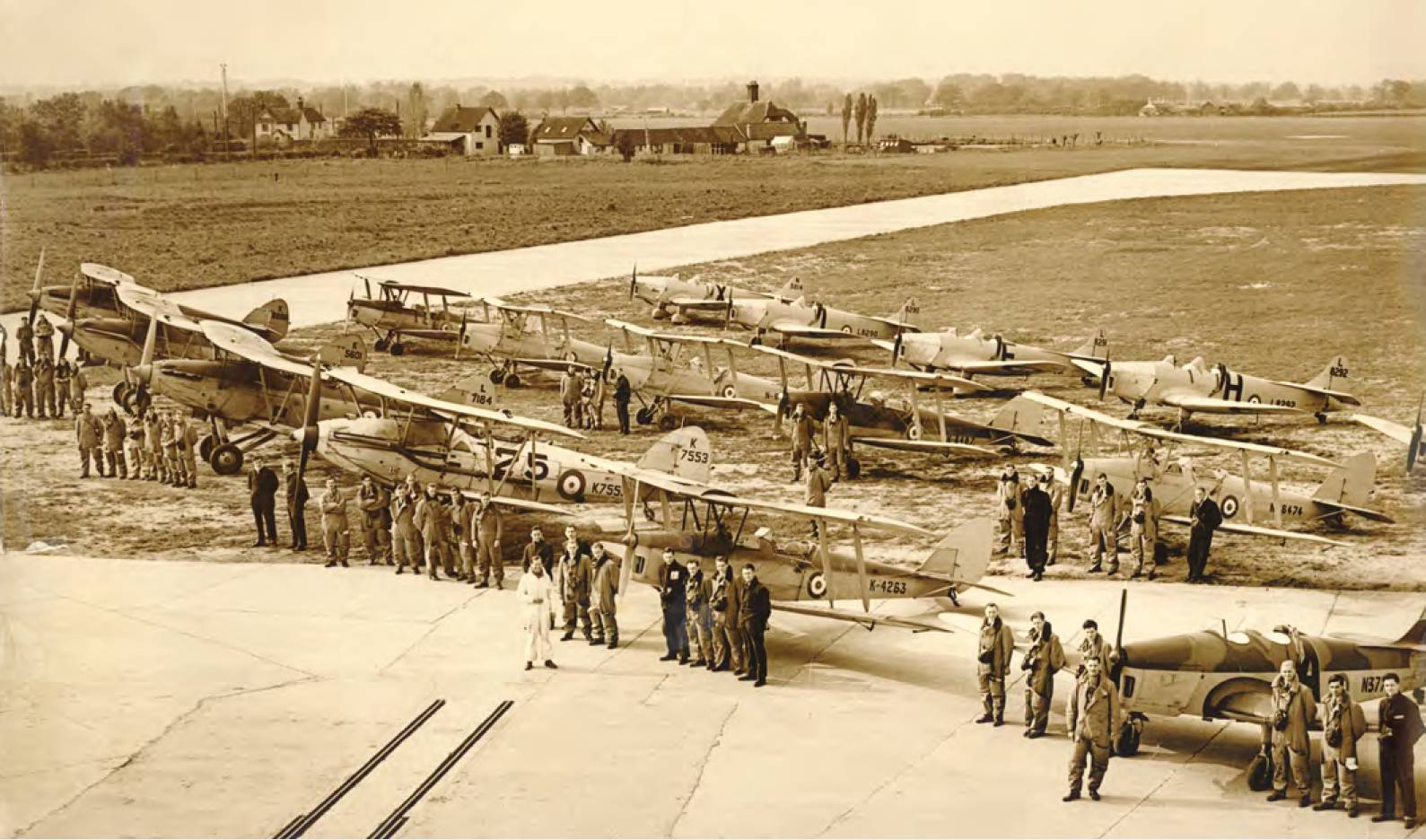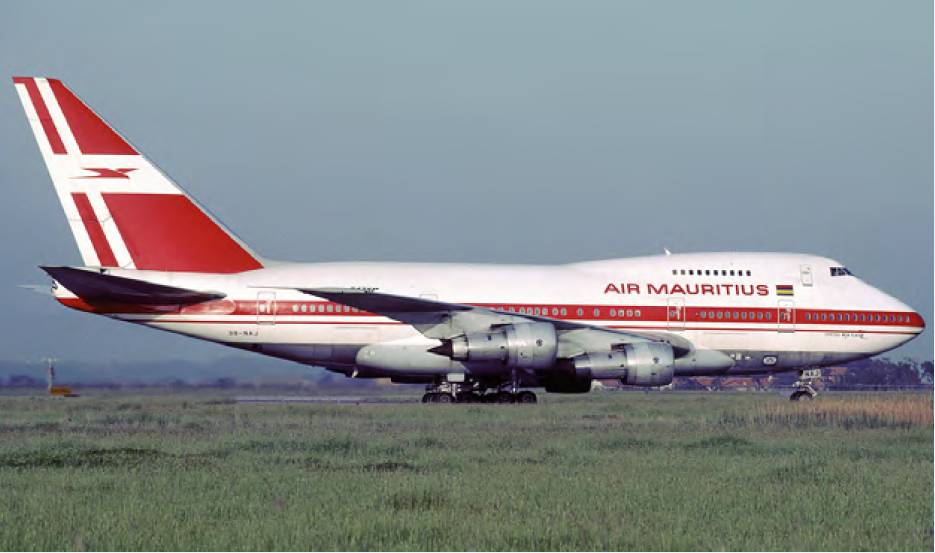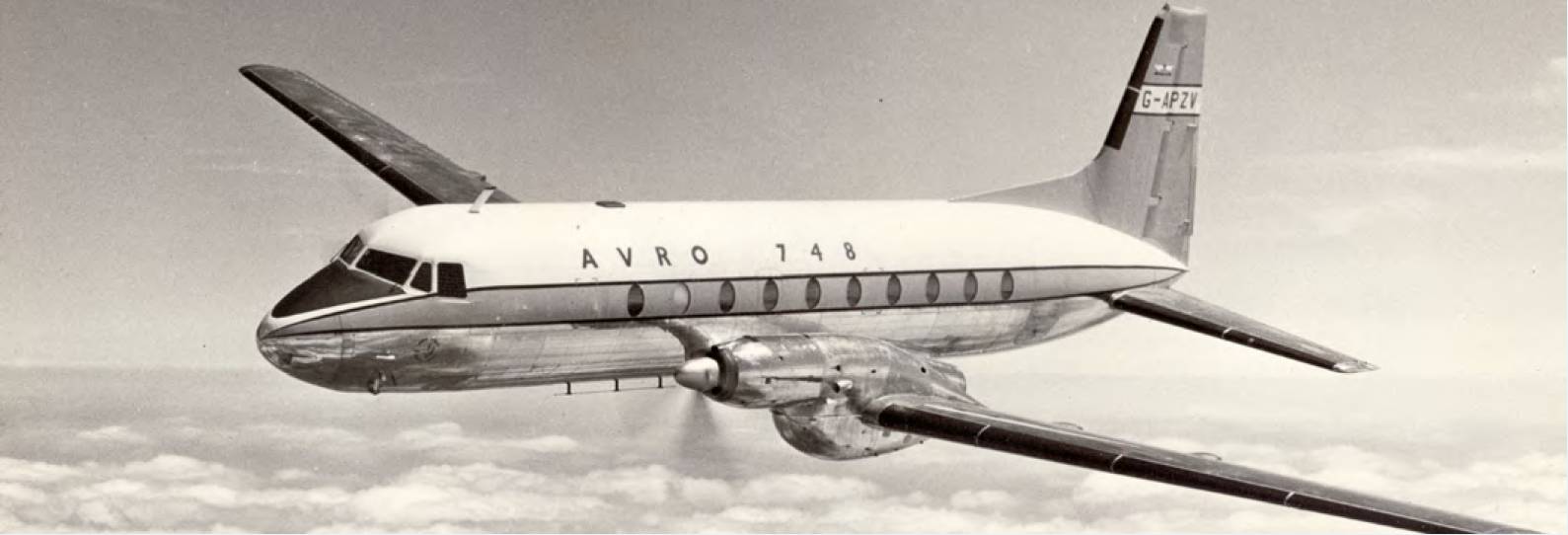Book Reviews
By Louise Wilkinson
Air World, 2020, 319pp, £25.
 The aircraft and pupils of the RAFVR at Gatwick. Aircraft include Hawker Harts, de Havilland Tiger Moths and Miles Magisters. RAeS (NAL).
The aircraft and pupils of the RAFVR at Gatwick. Aircraft include Hawker Harts, de Havilland Tiger Moths and Miles Magisters. RAeS (NAL).
In 1924, six years after the formation of the Royal Air Force, Parliament passed the Auxiliary Air Forces act, thus paving the way for the creation of reserve units of the RAF. Subsequently, in 1926, the Air Ministry set up two different reserve units: the Auxiliary Air Force (AAF) and the Special Reserve (SR). Both were set up on a territorial basis, that is to say units were based on a nearby airfield and they recruited from the surrounding area.
The AAF catered for those who wished to fly or wanted to learn to fly. Members had to hold a pilot’s licence or obtain one at their own expense. It came to be regarded as a gentlemen’s flying club, with many of the members having a public school and university background. The SR, on the other hand, catered more for those who had a trade or wanted to learn a trade.
Later, the SR was merged into the AAF and then, in 1936, a new organisation, the Royal Air Force Volunteer Reserve (RAFVR) was formed. This was a much more egalitarian organisation where members were recruited as Sergeant Pilots and taught to fly. They then had the opportunity to be commissioned based on merit.
The reserve squadrons played a vital part in the Second World War, including such famous names as the 600 (City of London) and 601 (County of London) squadrons. After the war the reserve air forces were re-established, including the setting up of a number of University Air Squadrons.
This fascinating story of the RAF reserves is examined in great detail in this book, which was originally written as her thesis for a PhD degree by Dr Wilkinson. In the book the author considers the history of the various reserve organisations from the early 1920s up until 1957. She deals particularly with the social backgrounds of the members and explores the effects of the differences in social status on recruiting in the pre-war era. The book also has extensive annexes giving the personal details of the officers who served in the Auxiliary Air Forces with before and after WW2.
The amount of detail contained in the book is amazing and there can be no more complete record of the voluntary squadrons that made up the Territorial Air Force. Any student of this subject should most certainly start here.
Sir Donald Spiers
CEng HonFRAeS
Quad Publications, Mauritius, 2020, 134 pages quarto.
 An Air Mauritius Boeing 747SP-44 at Rome-Fiumicino Airport in 1992. Aldo Bidini.
An Air Mauritius Boeing 747SP-44 at Rome-Fiumicino Airport in 1992. Aldo Bidini.
The book is not generally available but can be obtained direct from the publisher by emailing sales@quadprinters.com. A copy is available in the National Aerospace Library. This slim memoir written by Captain Dick Twomey FRAeS shortly before he died (obituary in AEROSPACE, August 2020) is part love letter to flying, part description of the evolution of the British air transport business since WW2 and part useful tips for pilots of the ‘I learned about flying from that’ variety.
